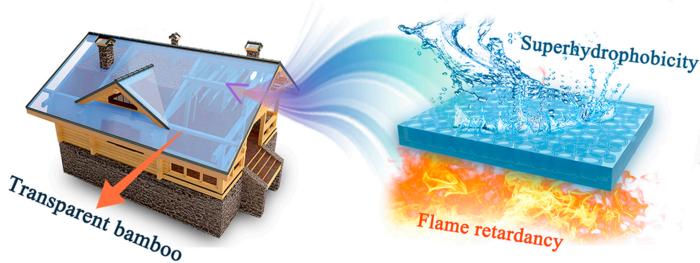Bamboo: The Eco-Friendly Game Changer in Construction
In the realm of sustainable construction, bamboo is rapidly outpacing traditional materials, establishing itself as the premier eco-friendly alternative of the 21st century. With a tensile strength comparable to steel and a growth rate that far exceeds conventional timber, this adaptable grass is transforming construction practices, seamlessly blending environmental responsibility with exceptional resilience and aesthetics.
Researchers from Central South University of Forestry and Technology (CSUFT) in China have achieved a remarkable breakthrough, pushing the boundaries of bamboo by transforming it into a transparent material akin to glass. This innovative material features a three-layered flame-retardant barrier that efficiently mitigates heat release, decelerates flame propagation, and suppresses the generation of toxic smoke and carbon monoxide emissions.
From Grass to Glass: The Remarkable Transformation of Bamboo
Despite the clarity of glass, it possesses drawbacks such as weight, susceptibility to shattering, and high energy requirements for production. However, scientists have developed a method for converting ordinary bamboo into a transparent material.
Transparent bamboo provides improved fire resistance, repels water effectively, and suppresses smoke production in case of a fire. These qualities enhance safety and sustainability in construction.
not only that transparent bamboo also holds promise for enhancing energy efficiency. Tests have demonstrated its ability to enhance the performance of solar cells.

Artist’s rendition of flame retardant glass made from bamboo.( Image by Research
Transparent Bamboo: Paving the Way for Greener, Safer Structures
Transparent bamboo is produced by treating it with a three-layer chemical process, modifying its structure to allow light transmission. While not perfectly transparent like glass (it allows approximately 72% light transmission), transparent bamboo offers a compelling blend of sustainability, fire safety, and energy application potential.
The future of transparent bamboo holds immense promise for revolutionizing the construction industry. However, challenges such as large-scale production methods and cost-effectiveness must be addressed before widespread adoption can occur.






